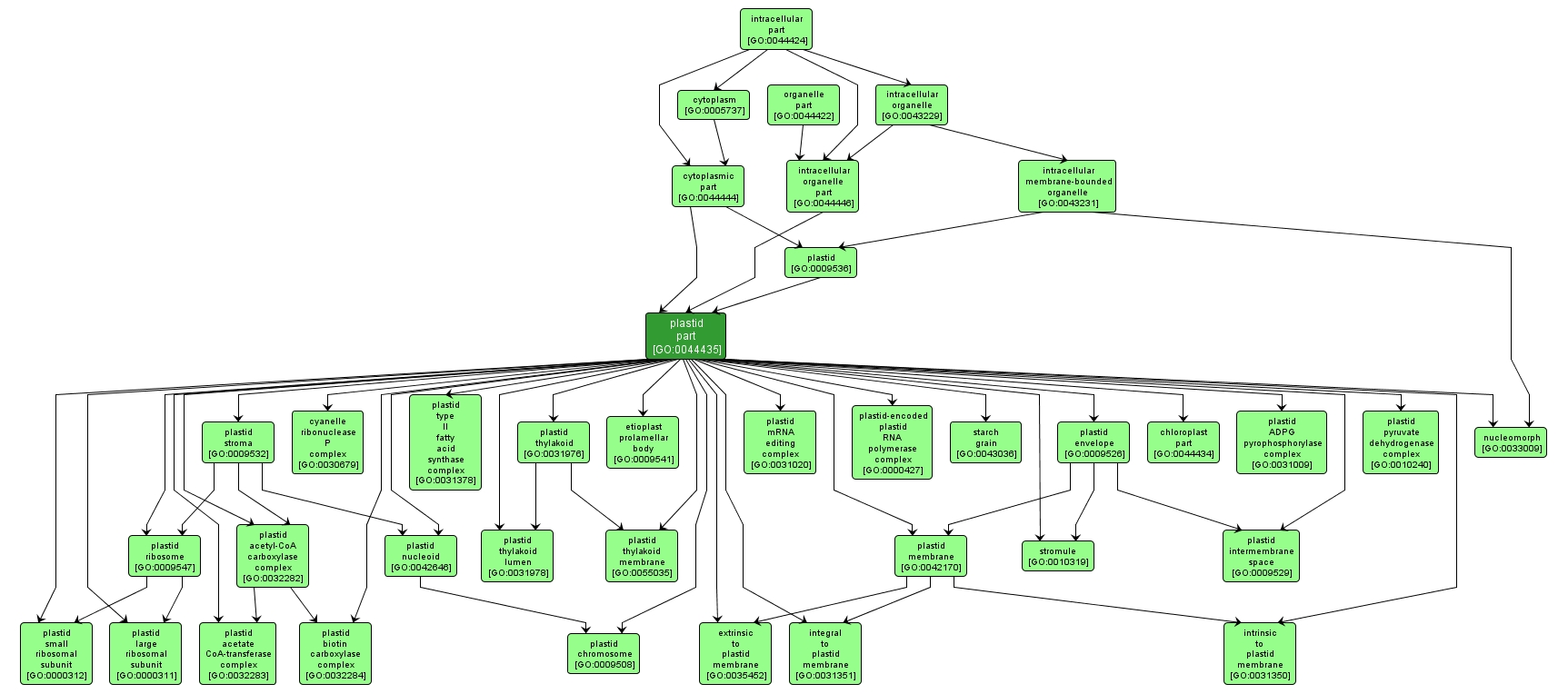GO TERM SUMMARY
|
| Name: |
plastid part |
| Acc: |
GO:0044435 |
| Aspect: |
Cellular Component |
| Desc: |
Any constituent part of a plastid, a member of a family of organelles found in the cytoplasm of plants and some protists, which are membrane-bounded and contain DNA. Plant plastids develop from a common type, the proplastid. |
|

|
INTERACTIVE GO GRAPH
|














